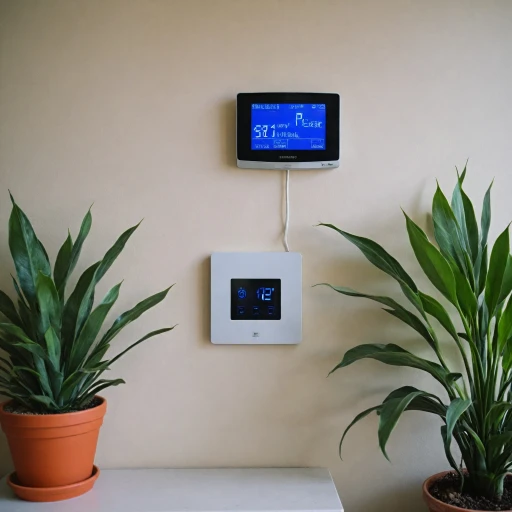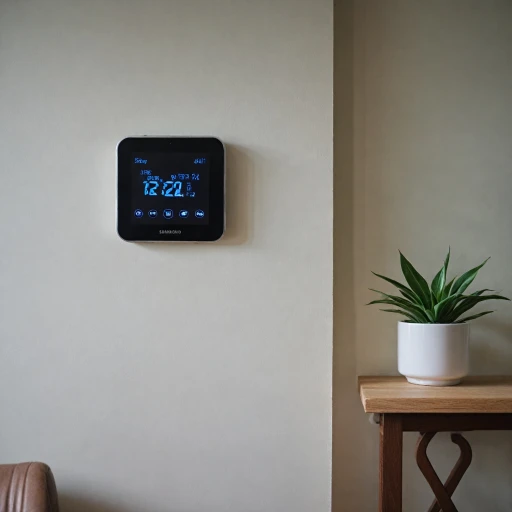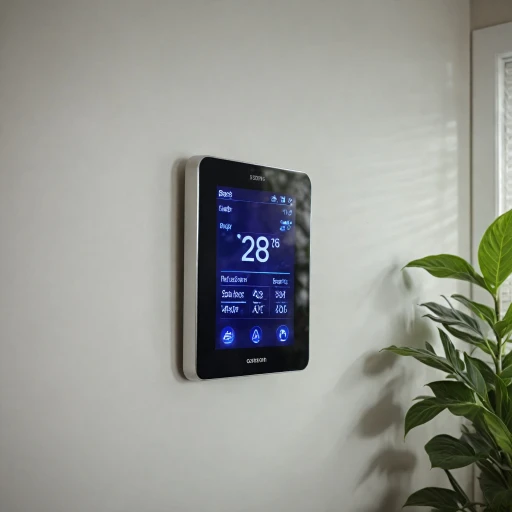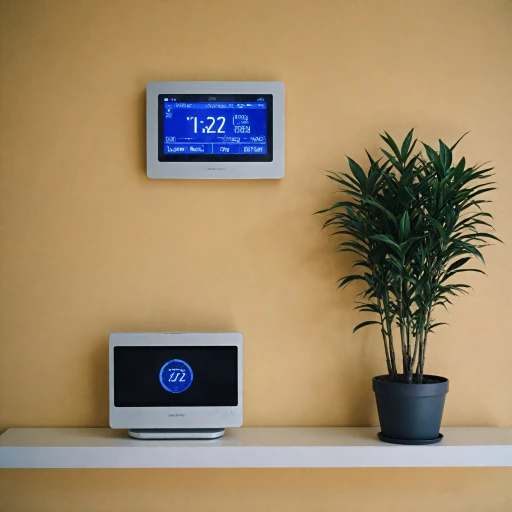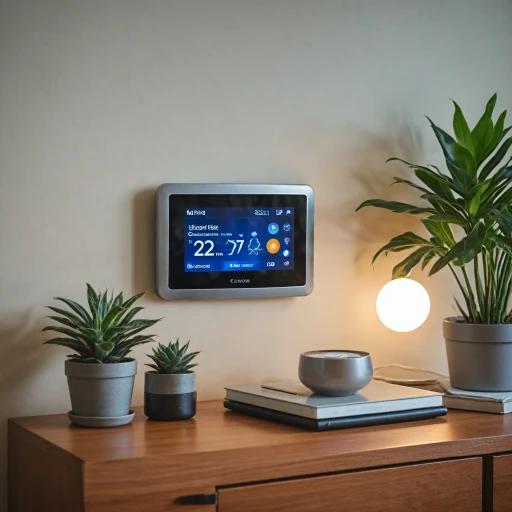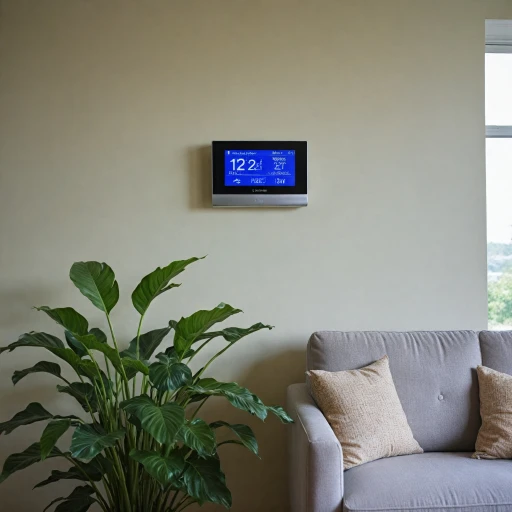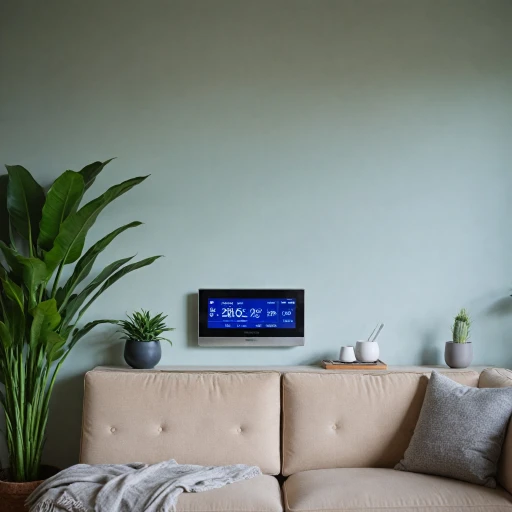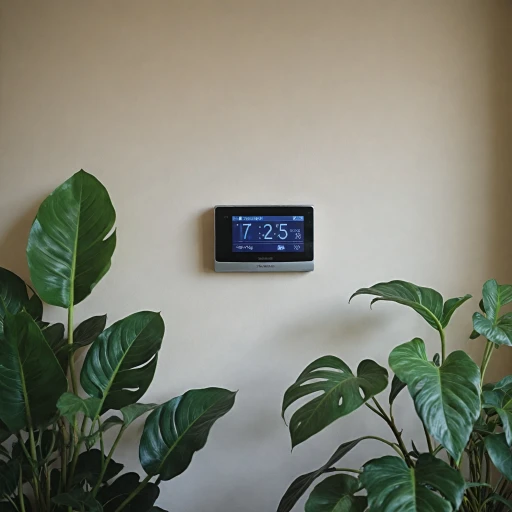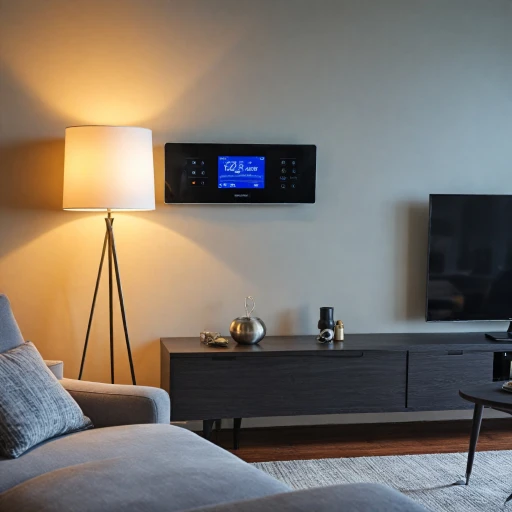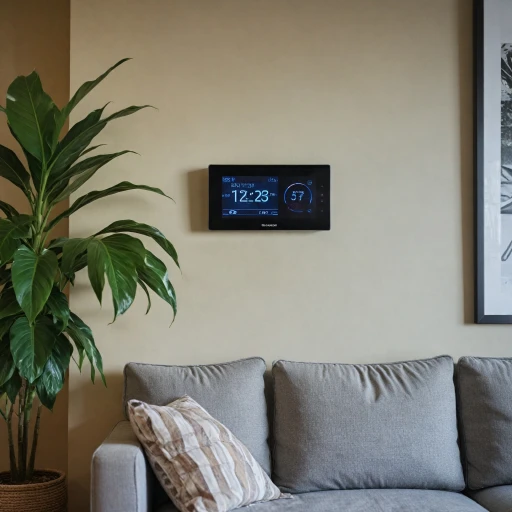
Understanding WiFi Thermostats with Remote Sensors
Exploring the World of Wi-Fi Thermostats
Wi-Fi thermostats have revolutionized how we control our home's temperature, offering convenience and energy savings. One standout feature of smart thermostats is the integration of remote sensors. This allows for a more accurate temperature management by accounting for various room conditions, unlike traditional thermostats that only measure the immediate surrounding temperature. These thermostats, such as the Ecobee or Honeywell smart products, utilize sensors to provide a comprehensive heating and cooling experience. Remote sensors strategically placed throughout your home ensure that the ambient temperature in different rooms is considered, enhancing your comfort level. When paired with technologies like Amazon Alexa or Google Nest, smart thermostats offer seamless integration with your home's existing smart systems. The Nest Learning Thermostat and Honeywell Smart Thermostat, for instance, are both excellent choices that work well within smart ecosystems. Furthermore, these devices provide an opportunity to effectively reduce energy consumption, leading to cost savings over time. The ability to control your thermostat via an app or voice command ensures that you can make adjustments from virtually anywhere. For a deeper dive into smart thermostats and their features, check out how the Honeywell 9000 WiFi Thermostat stands as a smart choice for modern homes, offering both reliability and advanced features.Benefits of Using Remote Sensors
Unlocking the Potential of Remote Temperature Control
Remote sensors are a game-changer in the world of smart thermostats, providing a level of comfort and control that's hard to beat. Traditionally, thermostats rely on a single sensor location to adjust your home's temperature. However, with remote sensors, you can place them in different rooms, ensuring your entire home remains at the optimal temperature. Smart thermostats, such as the ecobee and the Honeywell smart thermostat, work with remote sensors to monitor and control the temperature in various rooms. This feature is perfect for homes with multiple floors or areas that experience different levels of heating and cooling throughout the day. By using these sensors, your thermostat can adjust more accurately, making each room comfortable. The integration of remote sensors allows for precise control. Systems like the Nest Learning Thermostat and its remote sensor feature ensure that your heating and cooling systems work efficiently, reducing the burden on your HVAC system. This not only improves the comfort of your living spaces but also plays a significant role in energy efficiency. When paired with smart home ecosystems like Amazon Alexa, Google Nest, and Apple HomeKit, these sensors enhance your control capabilities. You can adjust settings with voice commands or through apps, ensuring that the comfort of your home is at your fingertips no matter where you are. Considering the advantages of remote temperature management, it's a worthwhile investment. Manufacturers like ecobee and Nest offer products that cater to these needs, providing premium solutions that also contribute to energy saving and cost reduction strategies. To delve further into how remote sensors play a role in home comfort, explore this insightful article. This resource provides a deeper understanding of how these innovative tools can transform your living experience.Installation and Setup Tips
Setting Up Your Smart Thermostat with Remote Sensors
Getting started with your new smart thermostat featuring remote sensors can seem daunting, but with the right approach, the process becomes straightforward and rewarding. The integration of remote sensors adds significant value, allowing precise temperature control in specific rooms. Here's a guide to ease your setup. Begin by selecting an appropriate location to install your thermostat. Consider a central area of your home that's most frequently used. This ensures that the thermostat accurately reads the general temperature and effectively manages your heating and cooling requirements. Make sure that the chosen location is free from direct sunlight and away from vents, as these can cause inaccurate readings. When it comes to the remote sensors, place them in rooms where temperature control is most critical, such as bedrooms or living areas. For instance, an ecobee smart thermostat works optimally when paired with sensors in several locations, allowing for balanced climate control across your home environment.To connect your thermostat to your home WiFi, follow the instructions provided in the product's manual. Most devices, like the Honeywell smart thermostats, include a step-by-step guide that walks you through the process. Ensure that your WiFi signal is strong near the thermostat location for seamless connectivity. Next, sync your smart thermostat with your home’s automation systems. Many products, including those from Nest and Google Nest, offer compatibility with platforms like Amazon Alexa, Apple HomeKit, and other smart home ecosystems. This integration allows for easy remote control using your voice or smartphone. Once installed and integrated with your smart home systems, program your thermostat settings based on your daily routine. Learning thermostats, such as the Nest Learning Thermostat, adapt to your schedule over time, optimizing both comfort and energy efficiency. For more specifics, consider exploring the Nest Learning Thermostat in Black to understand its advanced learning capabilities. Finally, familiarize yourself with the accompanying mobile app. These apps allow you to control your thermostat remotely, adjust settings on-the-go, and even access energy usage reports, making smart thermostats a premium choice for modern homes.
Energy Efficiency and Cost Savings
Maximizing Energy Efficiency with Smart Thermostats
Investing in a smart thermostat with remote sensors can significantly enhance your home's energy efficiency, leading to substantial cost savings. These advanced devices, like the ecobee smart thermostat or the Google Nest Learning Thermostat, are designed to optimize heating and cooling based on real-time data from various rooms.
Remote sensors play a crucial role in this process. By detecting the temperature in different areas, they allow the thermostat to adjust the HVAC system more precisely. This means your system only works as hard as necessary, reducing energy waste and lowering utility bills.
Smart Features for Smarter Savings
Many smart thermostats, such as the Honeywell Smart Thermostat, come with features that further enhance energy efficiency:
- Learning Capabilities: Devices like the Nest Learning Thermostat adapt to your schedule and preferences, automatically adjusting settings to save energy when you're away.
- Remote Control: With apps compatible with Amazon Alexa or Apple HomeKit, you can control your thermostat remotely, ensuring optimal settings even when you're not home.
- Energy Reports: Some models provide detailed energy usage reports, helping you understand and optimize your consumption patterns.
Cost-Effective Solutions
While premium models like the ecobee Smart Thermostat Premium offer a range of features, even more affordable options can deliver significant savings. The key is to choose a product that fits your specific needs and integrates well with your existing smart home systems.
Ultimately, the right smart thermostat with remote sensors can be a valuable investment, not only enhancing comfort but also contributing to a more sustainable and cost-effective home environment.
Integration with Smart Home Systems
The Harmony of Smart Home Integration
Smart thermostats, when integrated with smart home systems, allow for an unprecedented level of control and convenience. Imagine adjusting the temperature settings of your home using just your voice or controlling various aspects with a single app. This section explores how a smart thermostat with remote sensors can significantly enhance your home’s comfort and efficiency through seamless integration. Consider a thermostat like the Nest Learning or the ecobee smart models. These not only offer adaptive temperature control and intuitive learning features but also sync effortlessly with platforms like Google Nest, Amazon Alexa, and Apple HomeKit. This adaptability ensures that whether you are team Amazon or a dedicated Google enthusiast, your thermostat works with your preferred system. Remote control capabilities make these smart thermostats priceless additions to any modern smart home setup. By syncing with smart devices, users can:- Adjust the heating and cooling from any location, ensuring optimal temperature on arrival.
- Set up automations based on daily habits or preferences.
- Receive notifications and energy reports for real-time insights into home energy usage.
Choosing the Right WiFi Thermostat for Your Home
Selecting the Best Smart Thermostat for Your Living Space
Choosing the right WiFi thermostat with smart sensors for your home involves considering multiple aspects to ensure you benefit from the product. Here’s a closer look at what should be taken into account:- Compatibility with Home Systems: Ensure the thermostat works with your existing HVAC system. Popular options like Nest Learning Thermostat and Ecobee Smart Thermostat offer extensive compatibility, including with systems that use a common wire and those that don’t.
- Integration Capacity: Check if it integrates with home automation systems like Amazon Alexa, Apple HomeKit, and Google Nest. For instance, a Honeywell Smart Thermostat may offer seamless integration with smart home ecosystems.
- Remote Control Features: A thermostat with remote sensors allows you to control room temperature via apps and voice commands through systems like Amazon Alexa. This aspect enhances energy efficiency, a crucial factor covered previously.
- Energy Efficiency: Look for models that offer energy efficiency ratings. Products like Nest and Ecobee are known for helping users save on heating and cooling costs with smart scheduling features.
- Ease of Use and Installation: Opt for a user-friendly interface and straightforward installation process, which reduces the need for professional assistance. Some thermostats are designed for DIY setups, enhancing user convenience.
- Additional Features: Consider premium features like smart learning functions, which adjust settings automatically in response to usage patterns, offering a tailored room climate control experience.

